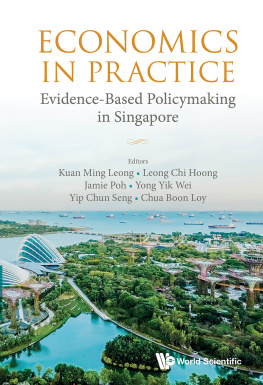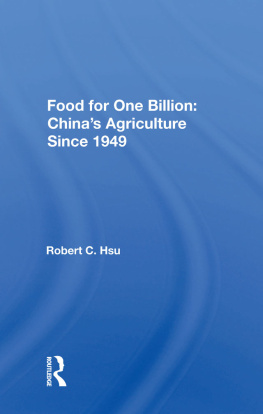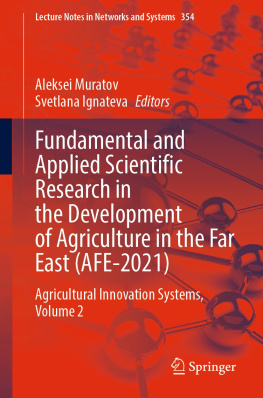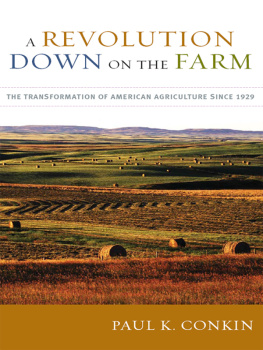AFRICAN ETHNOGRAPHIC STUDIES
OF THE 20TH CENTURY
Volume 73
AFRICAN FARMERS
IN RHODESIA
AFRICAN FARMERS
IN RHODESIA
Old and New Peasant Communities
in Karangaland
A K H WEINRICH
First published in 1975 by Oxford University Press for the International African Institute.
This edition first published in 2018
by Routledge
2 Park Square, Milton Park, Abingdon, Oxon OX14 4RN
and by Routledge
711 Third Avenue, New York, NY 10017
Routledge is an imprint of the Taylor & Francis Group, an informa business
1975 International African Institute
All rights reserved. No part of this book may be reprinted or reproduced or utilised in any form or by any electronic, mechanical, or other means, now known or hereafter invented, including photocopying and recording, or in any information storage or retrieval system, without permission in writing from the publishers.
Trademark notice: Product or corporate names may be trademarks or registered trademarks, and are used only for identification and explanation without intent to infringe.
British Library Cataloguing in Publication Data
A catalogue record for this book is available from the British Library
ISBN: 978-0-8153-8713-8 (Set)
ISBN: 978-0-429-48813-9 (Set) (ebk)
ISBN: 978-1-138-59941-3 (Volume 73) (hbk)
ISBN: 978-0-429-48570-1 (Volume 73) (ebk)
Publishers Note
The publisher has gone to great lengths to ensure the quality of this reprint but points out that some imperfections in the original copies may be apparent.
Disclaimer
The publisher has made every effort to trace copyright holders and would welcome correspondence from those they have been unable to trace.
Master farmers and their wives discuss modern farming techniques in the Shoko Museamwa community
AFRICAN FARMERS IN
RHODESIA
OLD AND NEW
PEASANT COMMUNITIES IN
KARANGALAND
A. K. H. WEINRICH
(Sister Mary Aquina O.P. )
Published for the
INTERNATIONAL AFRICAN INSTITUTE
by the
OXFORD UNIVERSITY PRESS
LONDON NAIROBI CAPE TOWN
1975
TABLE OF CONTENTS
Oxford University Press, Ely House, London WI
GLASGOW NEW YORK TORONTO MELBOURNE WELLINGTON
CAPE TOWN IBADAN NAIROBI DAR ES SALAAM LUSAKA ADDIS ABABA
DELHI BOMBAY CALCUTTA MADRAS KARACHI LAHORE DACCA
KUALA LUMPUR SINGAPORE HONG KONG TOKYO
ISBN 0 19 724194 8
International African Institute 1975
All rights reserved. No part of this publication may be reproduced,
stored in a retrieval system, or transmitted, in any form or by any means,
electronic, mechanical, photocopying, recording or otherwise, without
the prior permission of Oxford University Press
Printed in Great Britain by
Ebenezer Baylis and Son Limited
The Trinity Press, Worcester, and London
This book is dedicated to my friend,
Sister Mary Matthia Stigler, O.P.,
who conducted this research together
with me.
LIST OF ILLUSTRATIONS
Master farmers and their wives discuss modern farming techniques in the Shoko Museamwa community
LIST OF DIAGRAMS
This book is based on research carried out in Rhodesia between 1962 and 1969. Originally I intended to collect agricultural data as background information for a study of tribal politics. These agricultural findings I published in 1964. That short study, however, aroused my interest in African agriculture and between 1966 and 1968 I carried out a careful survey of labour organization and agricultural productivity in two tribal trust lands and two purchase areas. By 1968 the Rhodesian government had invested large sums of money in African irrigation schemes, so I decided to include two of these in my research project.
Throughout the research I asked myself which factors were responsible for high and low agricultural output. That climatic and ecological conditions rank high was clear to me, but I had noticed that even in identical environments productivity varied greatly. I therefore tried to choose peasant communities in which ecological factors were kept constant. This was possible for the tribal trust lands and purchase areas, but when I tried to select two irrigation schemes the Ministry of Internal Affairs, who are responsible for these areas, restricted my choice. After lengthy negotiations they allowed me access to two irrigation schemes, one of which was situated in a completely different climatic region of Rhodesia and was, moreover, occupied by a different tribal people. Hence several factors were introduced which complicated a strict comparison.
This book is the third of three studies in which I have dealt with that part of rural Rhodesia known as Karangaland. The first book, Chiefs and Councils in Rhodesia, was published in 1971 by Heinemann, London, and the second, Black and White Elites in Rural Rhodesia was published in 1973 by the Manchester University Press. Since in the first book I dealt with political events which, if the actors could be identified, might cause them embarrassment with the Rhodesian government, I used fictitious names for all the communities and also for all the people. To keep these people and communities anonymous, I have used the same fictitious names in this study.
I hope that this book will in a small way help to a better understanding of peasant problems in Rhodesia and help administrators to improve the living conditions of Africans in the rural areas of Rhodesia.
A. K. H. Weinrich
(Sr. Mary Aquina, O.P.)
Dominican Convent,
Salisbury,
Rhodesia
1974
Note When this book was written, Rhodesia shared a common currency with Great Britain. Since then Rhodesia has adopted its own currency, under which $2 equalled 1 before the was devalued. Throughout the book the money units are those of the old English .
Sr. Mary Aquina, 1964.
(1) PLANNING ECONOMIC CHANGES
Ever since the first Five-Year-Plan was formulated in Russia, some ten years after the Bolshevik revolution of 1917 which tried to transform the semi-colonial country of the tsars into a modern industrialized state, planning has become a respected government function in almost all countries on the road to economic development. In 1963 an international conference of the Rehovot was held in Israel and it devoted most of its time to agricultural planning in developing countries. studies in detail the theory and practice of development through government planning. Literature on the subject is too voluminous for any individual to wade through.
The interest in centralized economic planning results from the sudden awareness that in the twentieth century geographical distances have lost their meaning and that developed and underdeveloped countries have become neighbours whose fate is closely linked. A kind of universal responsibility has emerged, and the United Nations has become the meeting place where development plans are made and help is discussed.









